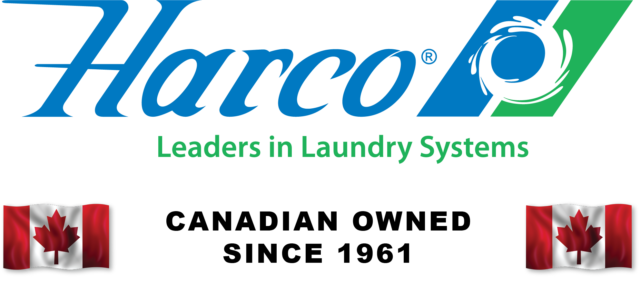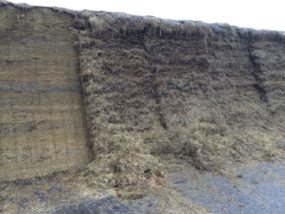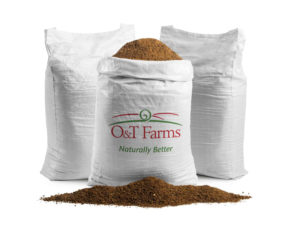Imagine stepping into your barn and understanding exactly what your cows are feeling – not by watching for obvious signs but by actually "hearing" their emotions. Every moo, bellow and low carries a hidden message, revealing whether a cow is content, stressed or reacting to its environment. For dairy farmers, this ability could revolutionize herd management, allowing for immediate, humane interventions that boost both animal welfare and productivity.
At Dalhousie University, our research team, MooAnalytica, is turning this vision into reality. We're harnessing artificial intelligence (AI) and Natural Language Processing (NLP) to decode cow vocalizations, transforming them into actionable insights. By analyzing thousands of cow sounds, we've discovered patterns that accurately reflect their emotional states. This isn't just about translating moos into human terms; it's about providing farmers with a practical, science-backed tool to enhance their operations.
Cows are more communicative than we might think. Their vocalizations are rich with information, much like a complex language. We've focused on two main types of sounds: high-frequency calls (HFCs) and low-frequency calls (LFCs). HFCs are loud and intense, often linked to distress or long-distance communication. A cow feeling isolated or anxious might emit these high-pitched, longer-duration calls – it's their way of "shouting" for attention. On the other hand, LFCs are quieter and lower-pitched, reflecting comfort and social bonding within the herd – the cow equivalent of a friendly chat.
By examining these vocal patterns, we've developed AI models that can distinguish between stress and contentment with remarkable accuracy – up to 98% in some cases. Using machine learning algorithms like random forest and support vector machines (SVM), we've trained computers to recognize these patterns. The real breakthrough came when we integrated OpenAI's Whisper model, which converts audio into text. This allowed us to translate complex vocal patterns into a readable format, making it easier to analyze and interpret.
Imagine receiving a notification the moment a cow starts showing signs of distress. Our system listens continuously, interpreting the emotional cues behind each sound. If something seems off, it alerts the farmer immediately. This real-time monitoring means issues can be addressed before they escalate, improving animal welfare and potentially saving significant costs down the line.
For dairy farmers, the practical benefits are enormous. Stress is a silent thief in dairy herds, affecting milk yields, complicating reproduction and increasing vulnerability to illness. Traditional methods rely on visual assessments or periodic health checks, which can miss subtle early signs of stress. Vocalization monitoring offers a hands-free, continuous approach, enabling farmers to "listen" to their herds around the clock.
Early detection is crucial. If a cow consistently makes HFCs, it might be experiencing discomfort or anxiety. By investigating promptly, farmers can identify and resolve issues before they impact the cow's health or the herd's productivity. This proactive approach not only enhances animal welfare but also improves the farm's bottom line.
Moreover, this technology allows for personalized herd management. Not every cow responds the same way to its environment. Recognizing individual vocal cues lets farmers tailor their care to each animal's needs. If a cow is making LFCs, it's likely content and comfortable. Frequent HFCs might indicate a cow that's sensitive to certain situations, like overcrowding or changes in routine. Adjusting management practices based on these insights can reduce stress and promote a healthier herd.
Consider the potential productivity gains. Relaxed cows are more likely to produce higher-quality milk and require fewer veterinary interventions. Monitoring welfare noninvasively means cows can thrive without unnecessary handling or disruptions. Over time, this could lead to fewer health issues, lower medical costs and overall better productivity. For farmers, this translates into a healthier, more efficient herd and to long-term savings.
Of course, implementing this technology on the farm comes with challenges. To make it practical for large herds, we need to refine our algorithms for diverse environments and conditions. Farms vary widely – from traditional barns to open pastures – and these differences affect how sound travels and is captured. We're working to ensure our models are robust and adaptable, performing reliably no matter the setting.
Another exciting avenue is integrating vocal monitoring with other types of sensors, like cameras, neck collars, RFID tags and activity trackers. Cross-referencing vocal data with movement patterns could provide even deeper insights. For example, if a cow's vocalizations signal distress and its activity levels drop, this could indicate illness or injury requiring immediate attention. A holistic monitoring system combining sound, vision and movement data would give farmers a comprehensive picture of each animal's welfare.
Accessibility is key. We recognize that for this technology to make a real impact, it must be affordable and user-friendly for farms of all sizes, not just large commercial operations. We're focusing on minimizing the required hardware and computing power, aiming to develop a cost-effective solution that even small family farms can adopt. Vocal monitoring could be a game changer for keeping herds healthy across the industry.
The implications for the dairy industry are vast. A system that listens to cows could revolutionize farming practices, helping achieve high standards of animal welfare while maintaining profitability. Consumers are increasingly conscious of how animals are treated, and farms that prioritize welfare can build a reputation for ethical practices. This not only satisfies consumer demand but also aligns with global movements toward sustainable and humane agriculture.
Imagine a future where every moo and call is heard and understood, where farmers can respond to their cows' needs in real time. This technology takes the guesswork out of welfare assessments, allowing for precise interventions based on actual data. It's easy to see how this could transform dairy farming, making it more efficient, ethical and responsive.
Our journey to understand cow communication is just beginning, but the potential impact is enormous. We're refining our models, expanding testing to different farm environments and exploring new ways to integrate sound monitoring with other welfare indicators. With continued progress, we're getting closer to a future where dairy farms benefit from an entirely new level of insight.
This is more than just listening to cows; it's about learning from them and building a more humane, sustainable way of farming. The challenges are significant, but so are the rewards. By embracing this technology, dairy farming can evolve beyond traditional methods, combining time-honored practices with cutting-edge innovations.
As we move forward, collaboration is essential. Farmers, scientists and technology developers must work together to realize this vision. By sharing knowledge and resources, we can overcome obstacles and accelerate the adoption of these advancements. The goal is to create a dairy industry that's smarter, more sustainable and deeply compassionate – one where data-driven decisions help us build stronger, healthier farms.
In the end, it's about giving cows a voice and listening to what they have to say. With AI and data analytics, we're finally able to hear them. As we continue to unlock the secrets of cow communication, we're not just improving farming practices – we're forging a new relationship with these incredible animals. Together, we can create a future where every cow is heard, every need is met and every farm thrives.








